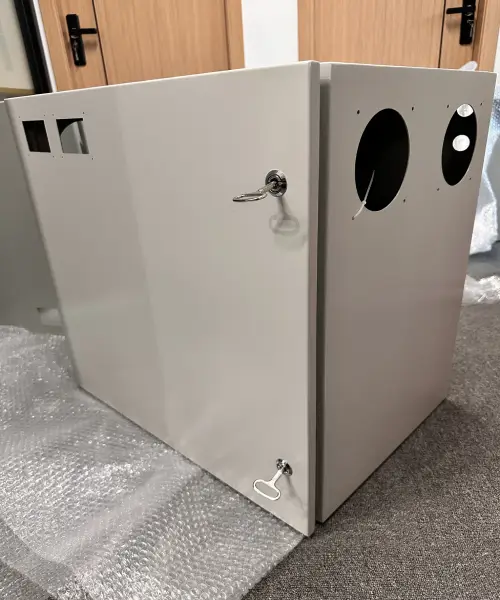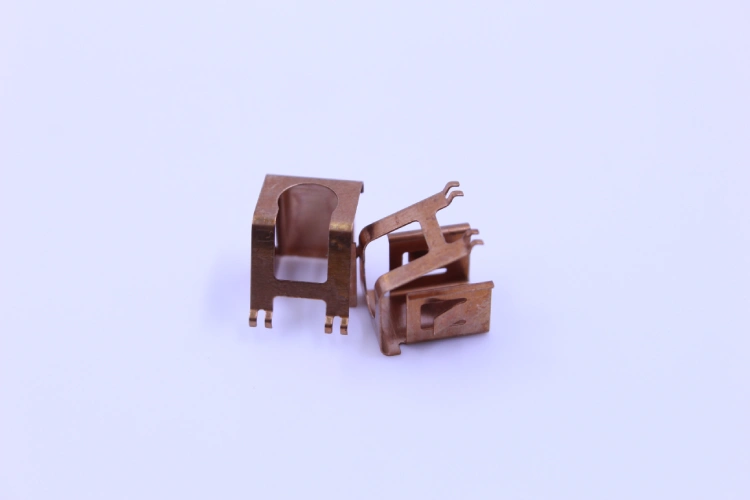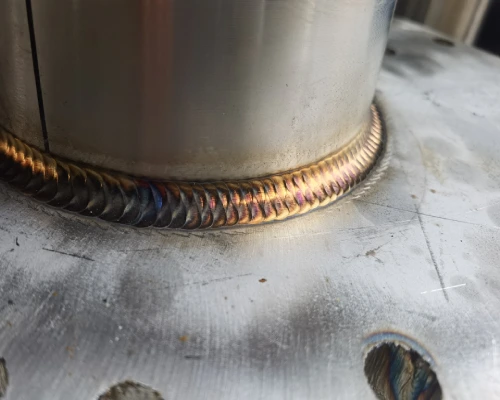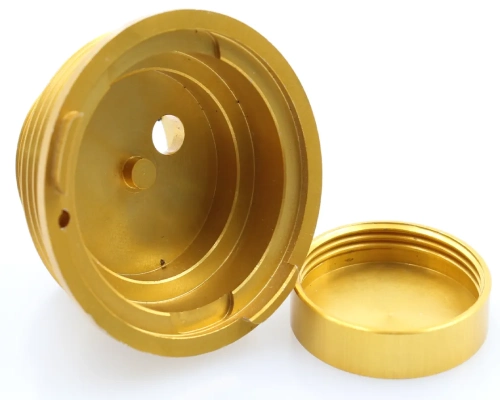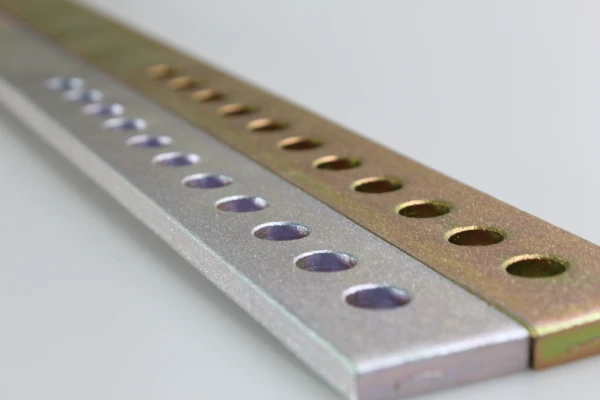In industries such as automotive, electronics, aerospace, and medical devices, CNC fabrication and 3D printing stand as two core manufacturing technologies, each supporting diverse production needs with unique strengths.
CNC fabrication produces parts by precisely cutting away material from solid blocks, while 3D printing transforms digital designs into physical components by layering materials. These two processing technologies exhibit significant differences in material selection, surface finish, and the ability to handle complex geometries. Understanding their respective strengths and limitations is crucial for product development and production.
This article provides a detailed analysis of CNC fabrication and 3D printing, covering their fundamental definitions, advantages and disadvantages, and key distinctions. It aims to help you correctly understand and appropriately apply these two processing technologies.
CNC Fabrication services
CNC fabrication services is a subtractive manufacturing process. It uses computer software and code to control large industrial machine tools and equipment, progressively removing excess material from a solid block (known as a blank) until it is precisely machined into the desired geometric shape.
Core Principles of CNC Fabrication
Its essence lies in "material removal." The process begins with a solid block of material. Various high-speed rotating cutting tools—such as drills, milling cutters, and turning tools—continuously remove unwanted sections until the part takes shape.
Primary CNC Fabrication Workflow
Design Modeling: First, a 3D digital model of the part is created using computer-aided design (CAD) software.
Programming: Engineers use computer-aided manufacturing (CAM) software to convert the 3D model into a series of digital instructions that CNC machines can interpret. These codes precisely control tool paths, rotational speeds, feed rates, and coolant activation.
Machine Setup: Operators secure the blank workpiece onto the machine table and install the required cutting tools.
Automatic Machining: Once the program is initiated, the CNC machine automatically executes all cutting operations without manual intervention until the CNC custom parts fabrication is complete.
Key Features and Advantages of CNC Fabrication
Exceptional Material Strength and Surface Finish: CNC custom parts fabrication involves machining from solid, dense blocks of material, resulting in structurally sound components with outstanding mechanical properties and strength. Additionally, CNC fabrication achieves exceptionally smooth, high-quality part surfaces.
Exceptional Precision and Repeatability: Custom CNC fabrication achieves micron-level accuracy and enables mass production of perfectly identical parts, making it highly suitable for large-scale manufacturing.
Broad Material Compatibility: CNC fabrication can process nearly all engineering materials, including various metals, plastics, and wood.
Limitations of CNC Fabrication
Material Waste: Subtractive processes inherently generate significant chips, resulting in material wastage.
Complex Shape Limitations: Due to tooling requirements (particularly milling cutters needing contact and access to the workpiece), CNC fabrication faces constraints when producing complex internal cavities, overhanging structures, or interlocking geometries.
Rapid Prototype Turnaround
Committed to exceeding expectations for quality and rapid turnaround, and meeting high-quality sheet metal parts.
On-Demand CNC Fabrication
Whether it is rapid prototyping & large-volume manufacturing, we will implement it according to customer needs and standards.
Real Fabricators Price
Integrate product design, bending, stamping, cutting, surface treatment, etc. to provide a series of manufacturing solutions.
3D Printing services
3D Printing, also known as additive manufacturing, is a manufacturing process that operates on principles entirely opposite to CNC fabrication. It constructs three-dimensional objects from the bottom up by layering materials—such as plastics, resins, or metal powders—using specialized equipment guided by digital models.
Core Principle
Its essence lies in "additive" construction. Following computer instructions, 3D printing slices a 3D model into layers. The printer then deposits material layer by layer according to the data, ultimately forming a complete part. Compared to traditional manufacturing, 3D printing requires no molds, excels at complex structures and customized production, and plays a significant role in custom medical device fabrication.
Technical Process
Design Model: Similar to custom CNC fabrication, a digital model must first be created.
Slicing: The 3D model is horizontally sliced into thousands of extremely thin 2D cross-sections, generating G-code that guides the printer's path.
3D Printing: The printer begins layered deposition based on the sliced file. Primary techniques include FDM, SLA, and SLM.
Post-Processing: After printing, post-processing is typically required—such as removing support structures, sanding, polishing, or curing surfaces—to meet final application specifications.
Key Features and Advantages
Extreme Design Freedom: 3D printing can produce parts with any complex geometry, including hollow internal structures, intricate flow channels, moving hinges, and monolithic designs impossible to achieve with traditional methods. Geometric constraints are virtually nonexistent.
Rapid Prototyping: The speed from digital model to physical part is exceptionally fast, making it ideal for concept validation, functional testing, and iterative design during product development.
High Material Utilization: Material usage is minimized, employing only what is necessary to build the part.
Personalization and Custom Production: Eliminates the need for additional molds, enabling cost-effective production of single-unit or small-batch customized parts.
Integrated Manufacturing: Products requiring multiple assembled components can be printed as a single monolithic piece, reducing assembly steps and potential failure points.
Limitations
Mechanical Properties: Layer-by-layer deposition results in varying mechanical properties across different orientations of the part.
Surface Quality: Parts typically exhibit noticeable layer lines on their surfaces, requiring post-processing to achieve a smooth finish.
Strength and Durability: Generally lower than CNC fabrication—especially for plastic parts, which often lack the strength and heat resistance of CNC-produced components.
Build Volume: Printing dimensions are constrained by the printer's build platform.
Production Speed: For high-volume production, 3D printing is typically slower than CNC fabrication.
No design files? Let Supro MFG do it for you.
We often come across clients who have no professional design drawings and documentation, only a creative idea, which leads to the project being at a standstill.
If you are in this situation, then contact our team of experts.
Supro MFG, as an industry-leading custom metal fabricator, has an ever-experienced team of engineers who utilize their extensive fabrication experience and technical expertise to build your idea into a real product and create design files such as STEP/STP/SLDPRT/DXF/PDF/PRT/DWG/AI.
That’s what makes SUPRO MFG so great, and 2,000 corporate, entrepreneurial, artist, and other purchasers from around the world enjoy working with us and benefiting from our one-stop manufacturing services.
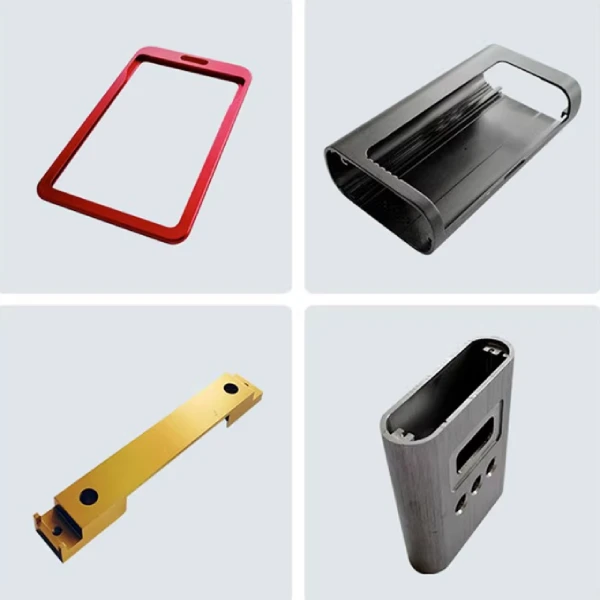
Differences Between CNC Fabrication and 3D Printing
Materials
CNC fabrication utilizes standard, dense engineering material stock. This means CNC fabrication can process nearly all types of solid materials, including:
Metals: Aluminum, steel, stainless steel, brass, titanium alloys, magnesium alloys, etc.
Plastics: ABS, polycarbonate, nylon, PEEK, PTFE, PMMA, etc.
Composites: Wood-based composites, graphite, etc.
3D printing utilizes specific printing materials, typically in filament (thread-like), powder, or resin form.
Primary material types:
FDM (Fused Deposition Modeling): Primarily uses thermoplastic filaments such as PLA, ABS, PETG, nylon, TPU (flexible material), etc.
SLA/DLP(Stereolithography/Digital Light Processing): Utilizes photopolymer resins, with a wide variety available.
SLS (Selective Laser Sintering): Uses plastic powders like nylon (PA11, PA12), and can also employ metal powders (e.g., aluminum, titanium, stainless steel, nickel-chromium-iron alloys, etc.).
Surface Finish
CNC fabrication utilizes standard, dense engineering material stock. This means CNC fabrication can process nearly all types of solid materials, including:
CNC Fabrication Parts Surface Finish
Surface finish directly impacts a part’s appearance and tactile feel. In this regard, CNC fabrication and 3D printing exhibit distinct characteristics.
CNC fabrication delivers superior surface finish. The process begins with a solid blank that already possesses a smooth surface. By utilizing high-speed rotating finishing tools and precise toolpaths, CNC fabrication can directly machine extremely smooth surfaces. Furthermore, by adjusting the tool’s rotational speed, feed rate, cutting depth, and employing different toolpath strategies, the surface roughness of the part (typically represented by the Ra value) can be precisely controlled.
3D printing Parts Surface Finish
3D printing suffers from layer lines, where the part surface exhibits subtle stair-step textures. Layer height (the thickness of each layer) is the key factor determining surface roughness: smaller layer heights result in less visible layer lines but longer print times. Among these, FDM exhibits the most pronounced layer lines and may also feature wave patterns and stringing. SLA/DLP surfaces are relatively smooth, though subtle layer lines remain visible on inclined or curved surfaces. SLS parts exhibit a uniform granular or sandpaper-like texture. To achieve smooth surfaces, 3D-printed parts require post-processing such as grinding, polishing, or sandblasting.
Part Geometry, Complexity, and Manufacturability
CNC fabrication faces limitations in part geometry and complexity. Its cutting tools must access areas requiring material removal, making intricate internal structures difficult to achieve. However, for relatively simple parts composed primarily of regular geometries (such as planes, cylinders, and cones), and applications requiring high-strength components machined from solid stock, CNC fabrication proves highly efficient and economical.
3D printing holds significant advantages in part geometry and complexity, capable of producing nearly any shape. It easily manufactures internal lattice structures, intricate flow channels, hollow lightweight components, and more. Since 3D printing adds material layer by layer, tool interference is eliminated. Theoretically, any shape is manufacturable as long as the printer can accommodate it.
Get An Instant Quote Now!
In summary, CNC fabrication is the optimal choice for traditional, angular block-shaped or shaft-type components. However, if your design features highly complex curves, intricate internal structures, or lightweight requirements, 3D printing technology is the preferred alternative.
Supro is a professional CNC custom machining & fabricating company. Leveraging advanced equipment, extensive manufacturing experience, and a specialized engineering team, we provide perfect CNC fabrication services to over 3,000 companies worldwide, offering genuine manufacturer quotes.
As an industry-leading CNC custom machining & fabricating company, we efficiently deliver diverse products on schedule. From product design and rapid sheet metal prototype fabrication to mass production, we provide expert technical support and exceptional quality. We offer one-stop manufacturing solutions and highly cost-competitive product supply!





